What is ad-fatigue? How can you beat it? And why is it a good thing?
We’ve all been there with ad fatigue, right? You’re cruising the web, minding your own business when bam! That ad that’s been following you around for weeks pops up again.
Even if you were interested in the product the first time, after you’ve seen the same ad dozens of times it’s probably just annoying. Or, you don’t even notice it anymore at all.
This absolute nightmare for marketers is known as ad fatigue. In this post, we’ll take you through all the ins-and-outs of ad fatigue and give you 15 ways to beat it.
Plus, we’ll also tell you why it’s actually a good thing.
Table of Contents
What is ad fatigue?
First thing’s first, what actually is ad fatigue? As the name would suggest, ad fatigue occurs when your audience has seen one of your adverts too many times and becomes tired of it.
Ad fatigue can quickly turn into ad blindness – when the audience simply stops acknowledging that your ad even exists. Obviously, this isn’t good for you as the advertiser.
Businesses normally advertize to inform consumers about their brand, persuade consumers to buy or sign up to something they sell, or remind consumers that they’re a market leader.
Whatever the purpose of an ad, its effectiveness is blunted if an audience is experiencing ad fatigue.
If you can already spot the indicators of ad fatigue a mile off, skip ahead.
How marketers can recognize the signs of Ad Fatigue
In order to recognize the signs of ad fatigue, you’ll need to use a couple of different metrics and Key Performance Indicators (KPIs), which we’ve handily listed below.
Which of these KPIs you use depends on the purpose of the targeted ad and the platform on which you’re advertising.
For example, let’s say you’re running a brand awareness campaign for Coca Cola using banner ads.
You’re probably not concerned with how many clicks you get, since the goal of the campaign is to raise awareness for the brand – simply seeing the ad is enough.
But… the amount of impressions would be super important.
Here are some of the common signs that your ads are dropping off regardless of what the goal of your campaign is:
Your click through rate dropping (CTR) due to ad fatigue
Click Through Rate (CTR) is an important metric to track if the purpose of the ad is to generate clicks.
If you’re not familiar with CTR, it’s the number of clicks your ad receives divided by the number of impressions (or the number of times your ad was shown to consumers), as a percentage.
So if your ad has been shown 1000 times and 30 people click on it, so your CTR would be 3%.

CTR isn’t an exact representation of the efficacy of your ad – it doesn’t account for consumers who viewed your ad, did not click, but then Google searched your brand, for example.
However, if you started with a healthy CTR that has totally dropped off, this can be an indication of ad fatigue.
There’s a bit more to it than this, but CTR basically shows you how popular your ad is. The higher the percentage, the more popular the ad. If your CTR is declining, ad fatigue could be the reason.
The Frequency of your ad increasing
You’re only able to do it on certain platforms, but finding out your frequency is really useful for detecting ad fatigue.
Frequency is the number of times your ad was displayed divided by the number of unique users your ad was displayed to.
So if an ad was shown 2000 times, and 1000 people saw it, so we have a Frequency of 2. That means that we expect people to have seen our ad twice, on average.
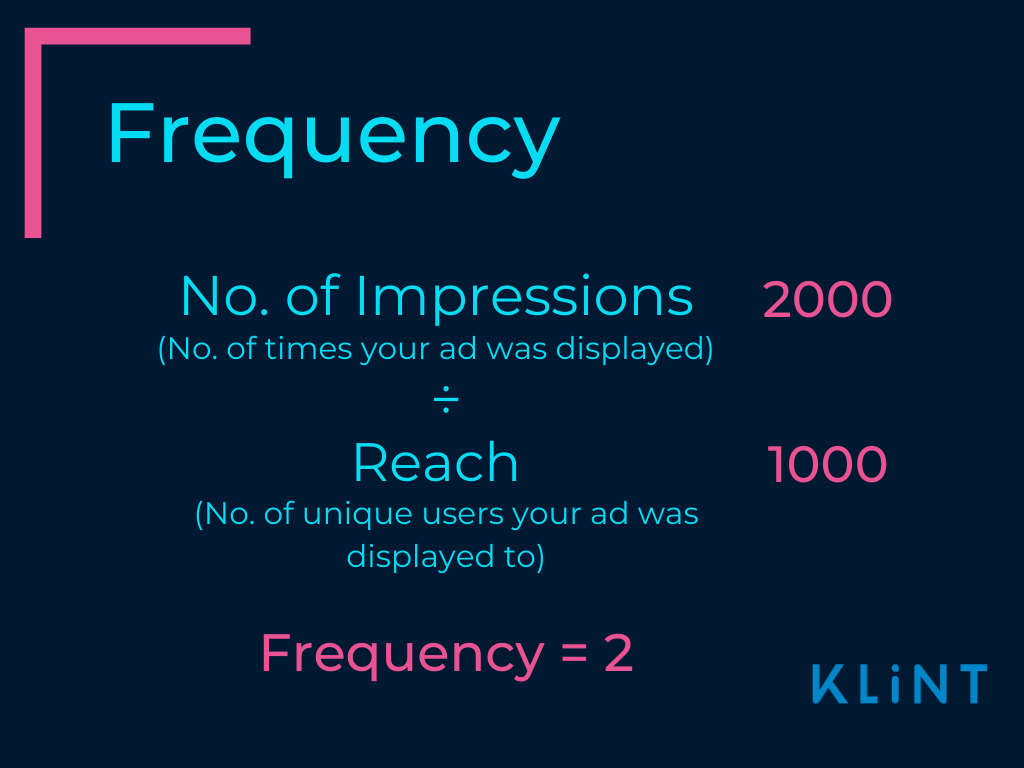
Like CTR, Frequency is not 100% accurate. However, it gives you a ballpark figure as to how many times people have seen your ad.
So how many times do people have to see an ad before they develop ad fatigue? Well, there’s no hard and fast rule to this. It completely depends on which industry you’re in and the purpose of the ad.
However, there is research to suggest that if your frequency were to reach 9, your Click Through Rate would drop by nearly 50%.
Facebook offers advice on what ad frequency you should be aiming for based on a couple of variables.
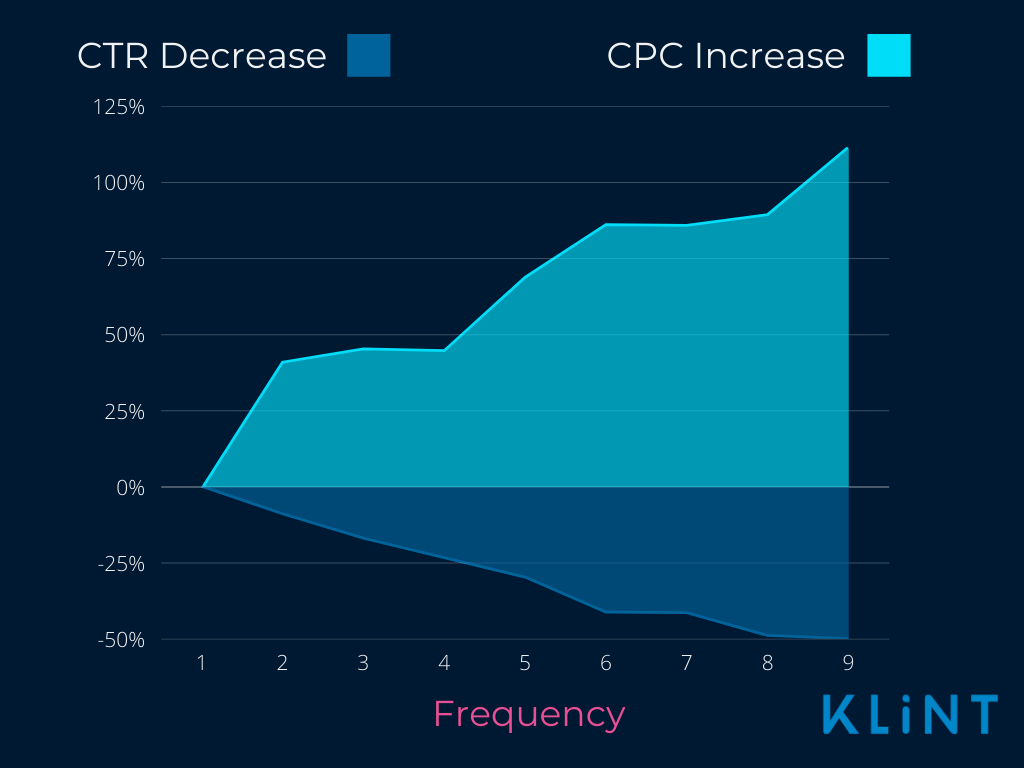
These stats paint a pretty grim picture for advertisers who outstay their welcome with audiences. For many businesses, CPC and CTR will take a real pounding once Frequency gets above 4.
Cost per Click increasing (CPC) and ad fatigue
Cost per click is the actual cost you pay each time someone clicks on your ad. An increasing CPC means that you are paying more to get clicks on your ad.
The average CPC varies wildly based on the industry you’re in and how specific you want your targeting to be. As a rule, the CPC generally increases with the value of the product or service you are selling.
The average CPC for businesses selling legal services is about 6 times than for e-commerce, for example.
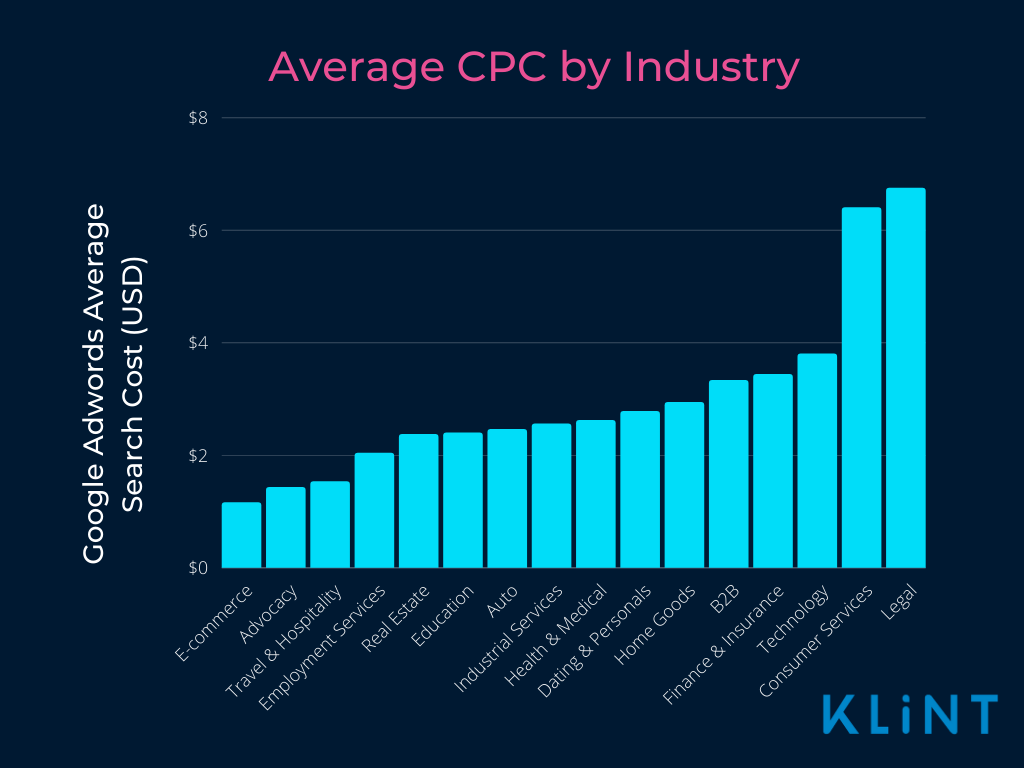
How long your ad has been running for?
This is partially common sense, but if you’ve had an ad running continuously for months and it’s no longer performing, chances are viewers are bored of it.
It’s worth noting though that this also depends on the amount of money you have spent on the ad. This is partially common sense, but if you’ve had an ad running continuously for months and it’s no longer performing, chances are viewers are bored of it. More and more people are searching for the ways to stop ads.
For a given target audience, a campaign with a huge budget will race through your target audience more quickly than one with a small budget. Therefore, it’s hugely important to set on the right budget before start running targeted or personal ads.
For brand awareness campaigns, a decrease in traffic
If the goal of your target ad is to increase brand awareness, you’ll be hoping that your ad improves the direct traffic you receive to your company website.
Ads that focus on brand awareness are less concerned about clicks on their ad, as they aren’t promoting a specific product or encouraging the audience to buy now.
Instead, they are trying to familiarize the audience with their brand or service, hoping to create a purchase later down the line.
If your direct traffic increased when your ad launched, but has then dropped as your frequency has increased, ad fatigue is probably the cause.
What is content fatigue? What’s social media fatigue?
It’s important to be aware of the difference between ad fatigue, social media fatigue, and content fatigue. While they are all related, they’re slightly different things.
- Social media fatigue occurs when users cease to engage with social media, overwhelmed with the amount of posts they are exposed to.
- Content fatigue describes the over-exposure of content to users. While it mostly refers to blog content, it also relates email marketing, ads, social media posts, and more.
Businesses have ramped up their online presence massively over the past couple of decades. With such a proliferation of content, it makes sense that audiences are less likely to engage when they are exposed to so much. As the result, too much of content leads to users wanting to block or stop ads. And you, as a marketer, should now it’s no good for marketing.
Online advertising has replaced print advertising in the past 20 years, but there is also far more being spent on advertising overall.
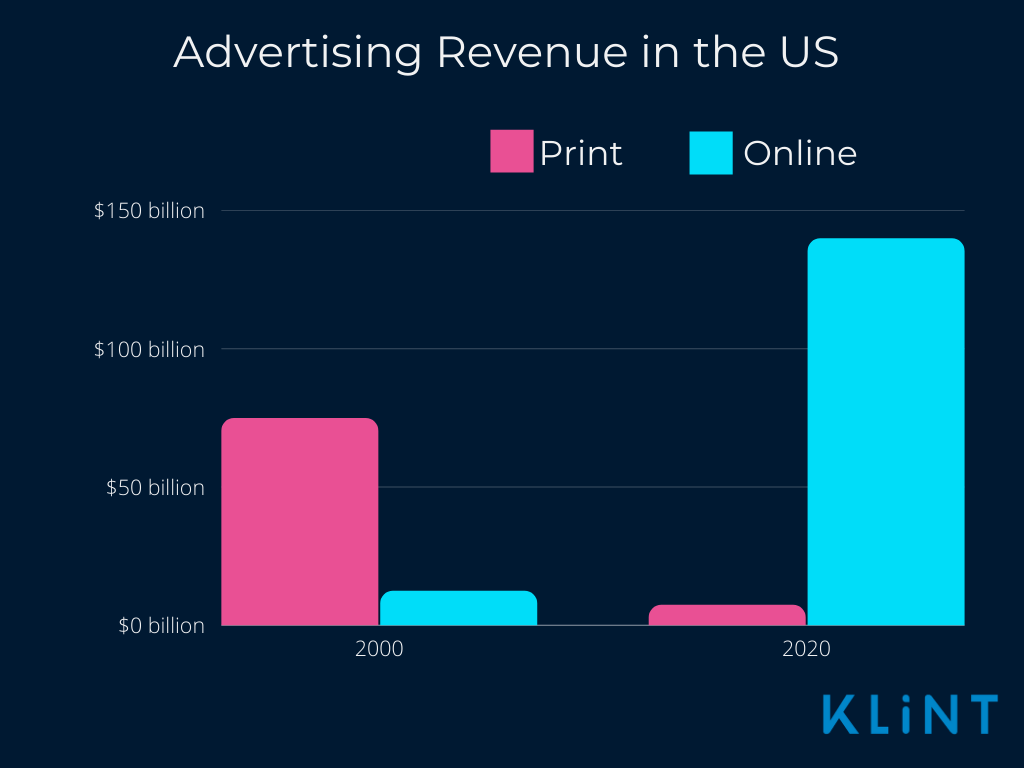
But it isn’t just the paid advertising industry that has grown. There are many players pushing out a constant stream of content today. Therefore, many users are overwhelmed with amounts of ads falling on them through social media channels. This situation opens doors for new business providers suggesting tools that block ads or can stop pop-up ads online.
Continuing, let’s take blogs for example – there are heaps more blogs around than there were in the past.
In 2006, there were an estimated 50 million blogs on the internet. In 2021, that figure is now at 600 million.
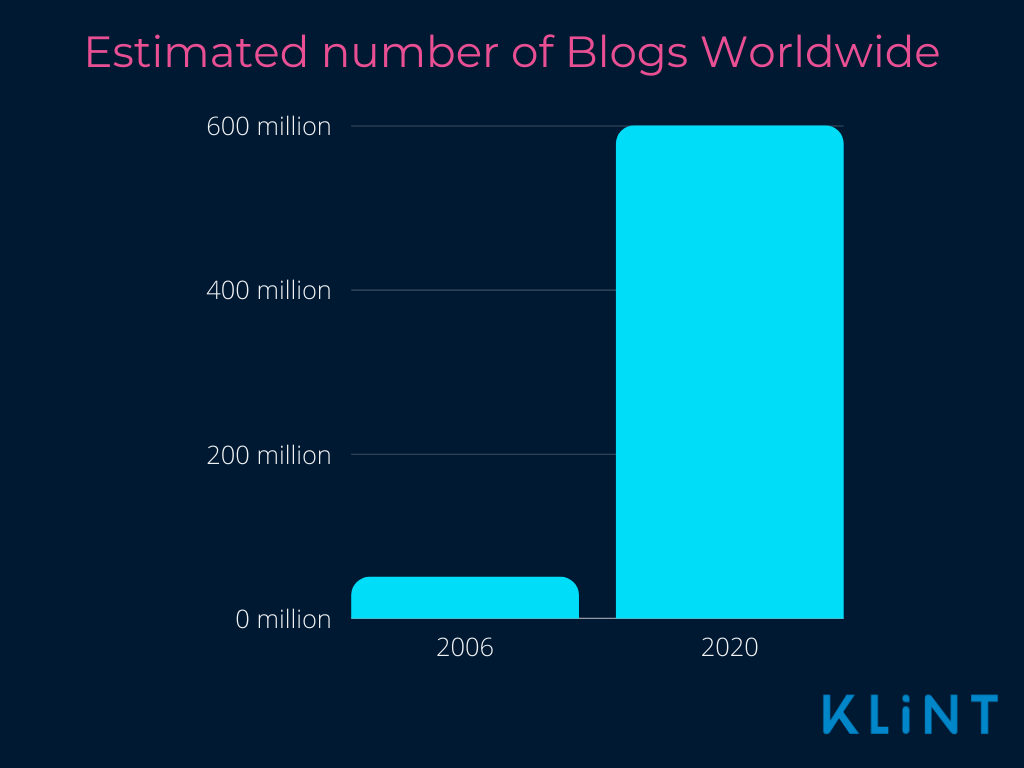
These two charts prove what many would assume already: audiences are exposed to far more ads and content, and for far longer. Thus, there’s no wonder why numbers of people with ad fatigue continuously increase.
Given the current climate, social media fatigue and content fatigue will effect your audiences tolerance for repetitive ads.
As such, adopting strategies that mitigate social media fatigue could well indirectly affect your audiences’ patience for your advertising campaigns. So you don’t lose followers or make them them click “stop seeing this ad”.
That said, it’s also key to get familiar with some good practices for your ad campaigns, which we’ll cover in our 15 ways to prevent ad fatigue section later in this post.
How to recognize Facebook ad fatigue vs something else?
With so many different metrics to consider when marketing on Facebook, it can be difficult to keep track of what’s going on, and what’s causing a decrease in performance.
The key thing to look out for with all of the above metrics is a decline. If your ad initially performed well, then nose dived as your Frequency increased, ad fatigue is almost certainly the cause.
It might seem like ad fatigue could be the only cause in this situation, but it’s worth bearing in mind that there are other external factors that could be influencing this, like poor reviews for your product or public criticism.
Remember that many people direct search after viewing an ad, so just because your click through rate has decreased slightly, it doesn’t mean that people are not engaging with your content at all. Unfortunately, far not every action with social media ads, and marketing in general, can be tracked.
That said, you can use a combination of three KPIs to arrive at a conclusion of ad fatigue that’s about 99.99% accurate.
Be patient, and remember that you don’t need to pull your ads the second Frequency increases and CTR falls.
How do you measure ad fatigue?
A combination of increasing cost per click and decreasing click through rate is generally considered to be a solid way of discovering ad fatigue. If your ad also has a high frequency, the diagnosis is almost certain.
We can therefore use this simple formula:
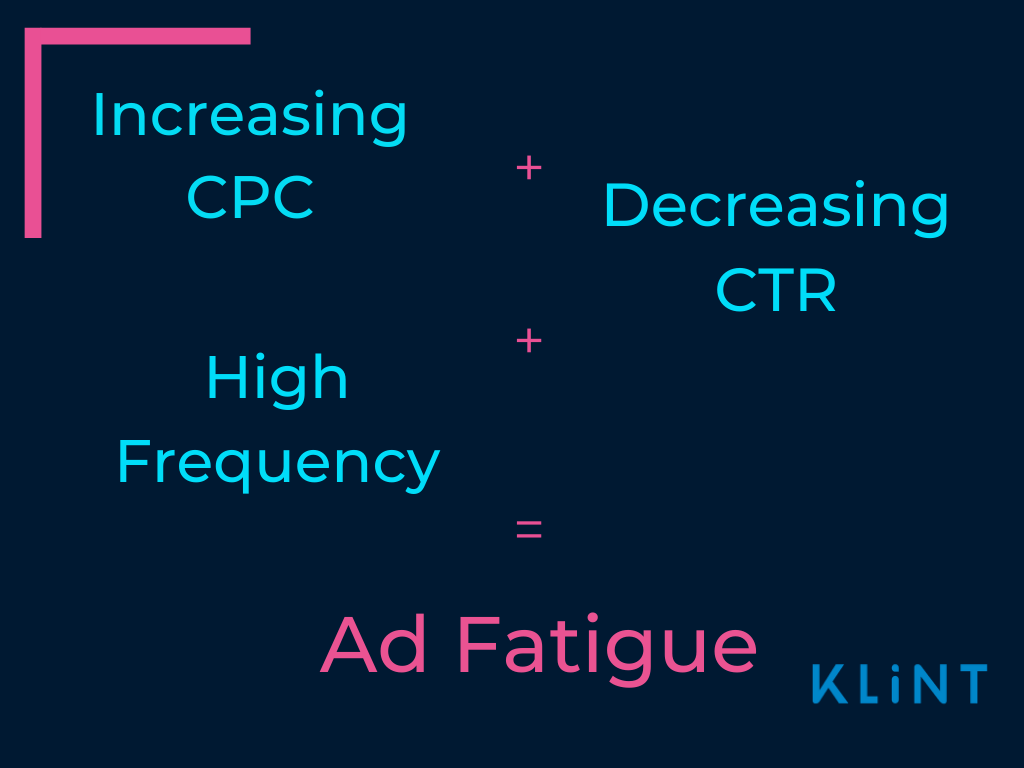
If the goal of your ad is brand awareness rather than generating clicks, you could replace Decreasing CTR & Increasing CPC with something like a decrease in Direct Traffic.
Effectively, ad fatigue is present if the metrics you use to measure the success of your ad are dropping and the amount of people who have seen your ad is rising.
How is ad fatigue good then?
Ad fatigue might seem like a real pain, but there are silver linings.
By staying on top of the indicators of ad fatigue, you get advance warning of when your ads are starting to flop. That’s pretty useful when you think about it.
It’s like the warning lights on a car. Sure, it’s not great when they light up, but it’s definitely better than breaking down in the middle of nowhere. Therefore, ad fatigue is a right signal to review your ad strategy or simply to refresh your target ads. The choice is yours!
Think about the subtext of ad fatigue as well. Your audience is indirectly telling you when it’s time to refresh your ad campaign. That’s actually super handy!
Rather than the old days of running a billboard campaign for months and hoping for the best, ad fatigue tells you when you need to do something about your campaigns. This way, you can save a big part of your campaign budget!
Plus, if you enjoy the brainstorming process, it gives you the chance to use your creativity (which can be the fun part of marketing).
Whether you view ad fatigue as a massive pain or a useful indicator depends on your mentality towards it.
How do you prevent ad fatigue?
If you think your offer is good and you’re reluctant to change your ad concepts, there are avenues you can explore to reduce ad fatigue on existing ads.
The different ways to prevent ad fatigue can be broadly broken down into two different sections.
- Content/cosmetic adjustments – tweaking existing ad copy or graphics to prolong their life span.
- Technical adjustments – adjusting the target audience and settings in the platform your ads are displayed on.
Technical adjustments can be more difficult to figure out if you haven’t done it before. But as is always the way with these sorts of things, the benefits may well be greater.
A combination of both is probably the most effective method of keeping your audience engaged with your content for longer.
15 ways to prevent ad fatigue
So, how can you cure ad fatigue? There’s a few fairly easy and simple things you can do to adjust your campaign and stave off ad fatigue for a little while longer.
Whichever methods you decide on, just remember to implement them one or two at a time.
That way, you’ll know which adjustments worked well for you next time you encounter ad fatigue!
By incorporating some of these into your “marketing arsenal” (™ pending), you’ll be able to be more proactive in the future instead of just reacting to declining metrics.
If you’re really struggling, consider chatting with an advertising and growth hacking agency to give you some pointers.
1. Pause high frequency ads
Once you’ve established that your audience is experiencing ad fatigue, you’ll have a benchmark for the frequency at which this occurred.
Once you figure this out, you can instruct Facebook and Google Ads to automatically pause your campaign when this frequency is reached.
This prevents you from wasting money putting out ads to an audience that is (statistically) unlikely to respond.
2. Duplicate your ad set
This is sort of the online marketing version of “turn it off then turn it back on”. But sometimes, for whatever reason, it just works.
Maybe you’ve accidentally added parameters that are making the ad ineffective. Or, perhaps the system is just having an off day.
Whatever the reason, if you’ve tried everything else then duplicating the ad set is a good fallback option.
3. Change ad colors
It’s a pretty simple fix, but you’d be surprised at how effective changing the background color of an ad can be.
Obviously, you’ll want to choose colours that are still relevant to your overall branding. And fit within your color palette. If your brand colors are mostly green and white, don’t put a new ad in that’s bright red.
Take a look at these ads for a fictional e-store selling plants.
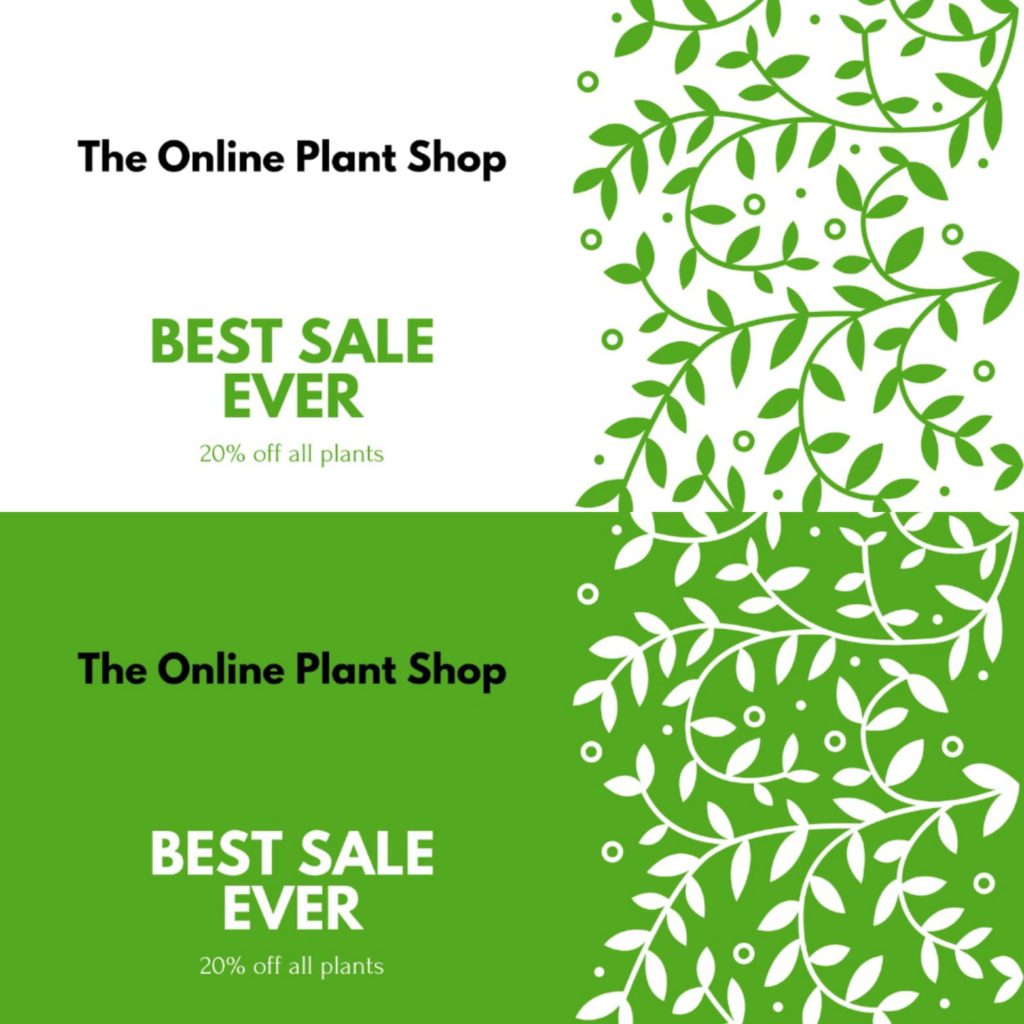
By swapping around the background and graphic colors, you’ll freshen up the ad and give it a different feel.
4. Tweak copy
Sometimes, you can avoid ad fatigue by tweaking the copy of an ad without completely going back to the drawing board.
Using the above example, you may well decide (correctly) that “20% off all plants” is actually a more compelling headline than “Best Sale Ever”.
If you’re struggling for ideas on how you could improve the copy in your ad, check out our list of the Best Advertising Campaigns.
5. Adjust CTA, or add a time sensitive CTA to beat ad fatigue
Sticking with our fictional “The Online Plant Shop”, it could make sense to add in a Call to Action (CTA). This could be, for example, “Buy at www.theonlineplantshop.com”.
Even better than that though is the addition of a time sensitive CTA, which could look something like this:
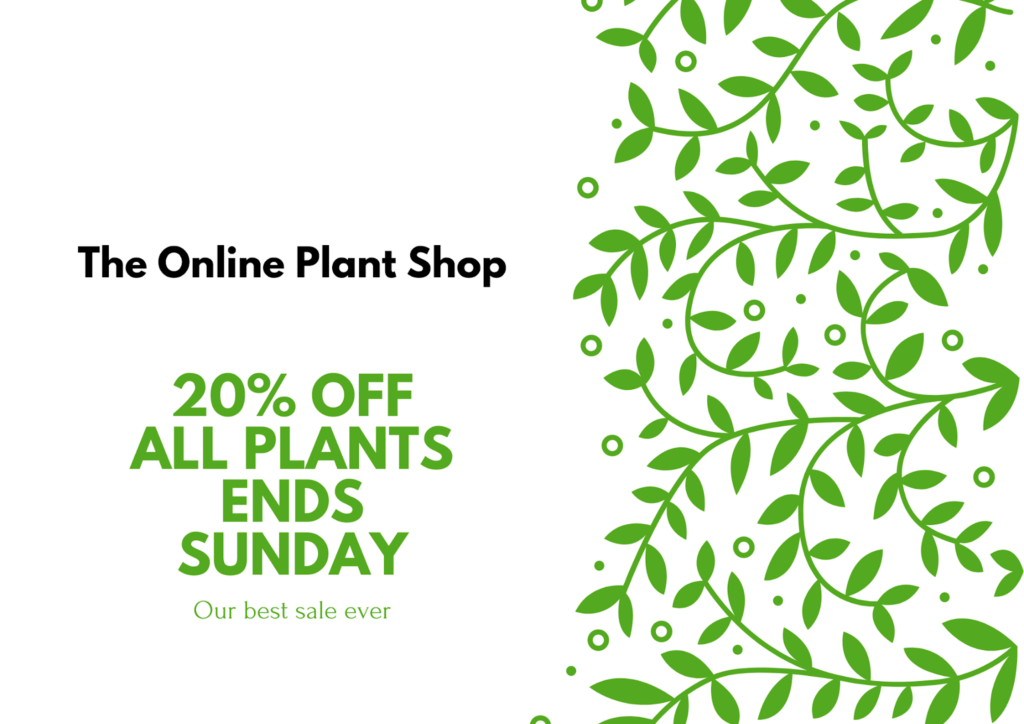
By introducing a time sensitive element to the ad’s headline, it introduces an element of FOMO for the audience.
Of course, this won’t work for every brand and every ad, but it’s worth looking back over your ad copy to see if there’s any adjustments you could make to mix things up.
6. Use new images, or reverse your existing images
Again, this is a pretty quick fix that should be fairly easy to implement. If you’ve already invested in photography or graphics for your ad set, you could try swapping it around to the other side of the image.
Alternatively, if you’re relatively flexible around the images or graphics that you’re using. It could be worth replacing them entirely with fresh ones.
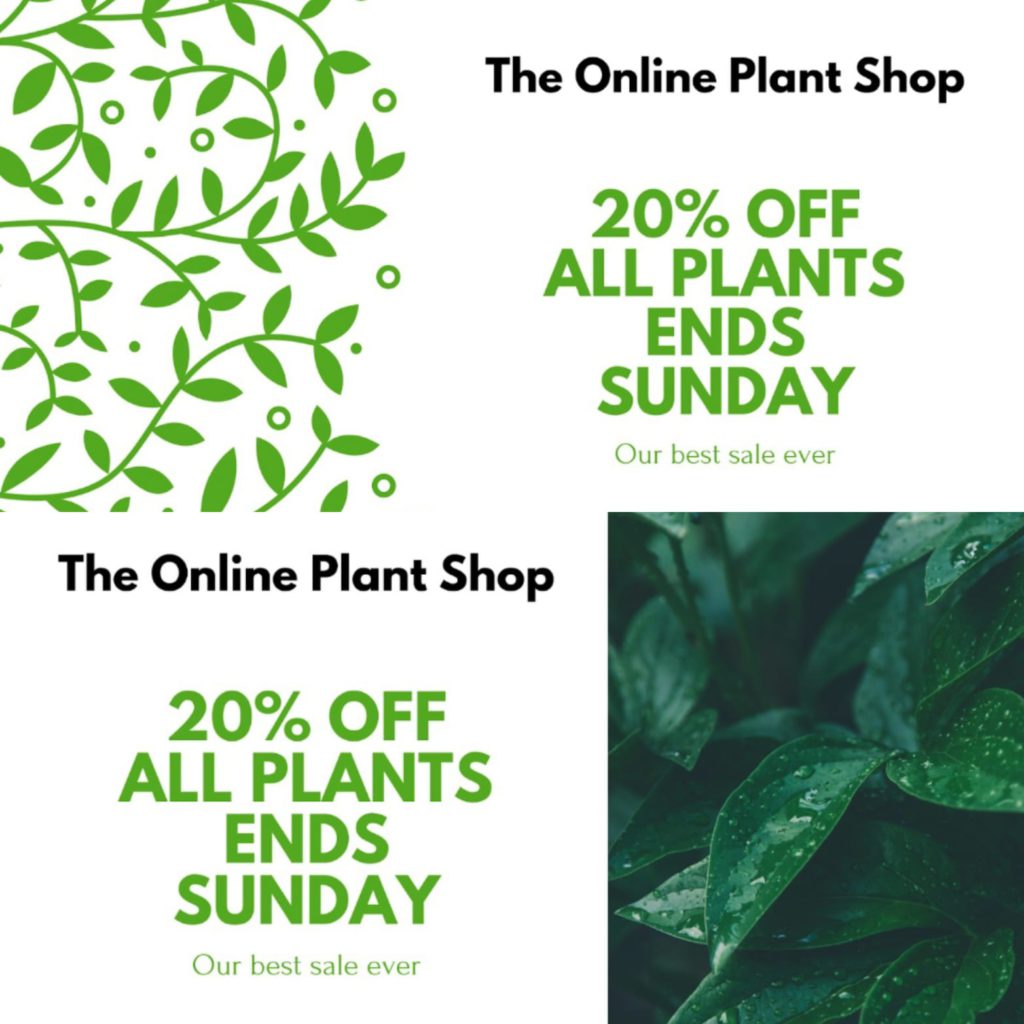
As you can see above, adjusting the image makes it look like a completely different ad. Even though the copy is exactly the same.
7. Use different fonts
This is a bit trickier, as many brands have a list of “company fonts” that are acceptable to use.
If, however, you have a bit of free reign when it comes to fonts and you’re really stuck for ideas, you could try using a different one.
This is probably not going to have a massive effect by itself, but if combined with an image swap or copy adjustment it could keep your ad alive a little bit longer.

8. Exclude audiences that have already engaged with your ad or brand
Depending on how you measure a conversion for your ad, consider excluding people who have already engaged with your ad or brand in some way.
If you’re trying to get people to buy a specific product, consider excluding those who’ve already purchased.
Or, if the objective is to get more Facebook likes for your page, don’t advertize to people who have already liked your page in the past.
This prevents you from alienating people by serving them repetitive ads, and it also saves you money. What’s the point in trying to get people to do something they’ve already done?
9. Create new audiences without ad fatigue
Take a look at the audiences you’ve been targeting. Is your target audience too narrow? Is there another audience that might be more responsive?
Look for audiences that exhibit similar behaviour to audiences that have converted for you in the past as these are the consumers most likely to show interest in your products or services.
It’s also worth periodically reviewing your target market. It’s unlikely your customers will have shifted from 60+ males to 20+ females without you noticing, but in some cases you may have experienced a slight demographic shift.
Never rely on assumptions. It may well be worth testing out a slightly different audience to see what happens.
10. Use multiple ad sets, in rotation for ad fatigue
When you’re brainstorming ad sets, create a couple of different options. When you go live, you can then rotate the different sets.
By rotating your ads, you reduce the chance of your audience being exposed to exactly the same content over and over again.
It’s a bit like bringing on a substitute in a sports match.
11. Look for audience overlap
Audience overlap is when the same people appear in two different audience sets. To use an extremely simplistic example, let’s say you have two different audience sets.
Set 1 is people with brown hair.
Set 2 is people with green eyes.
Most people will only fit into one of the sets, but for everyone who has brown hair and green eyes, they’ll be getting your ads twice as frequently.
This is bad for two reasons. Firstly, because it’ll probably be really annoying for them. And secondly because you’re paying to advertise to the same people twice.
If you’re using Facebook Ads Manager, there’s a “show audience overlap” button that can help you find this.
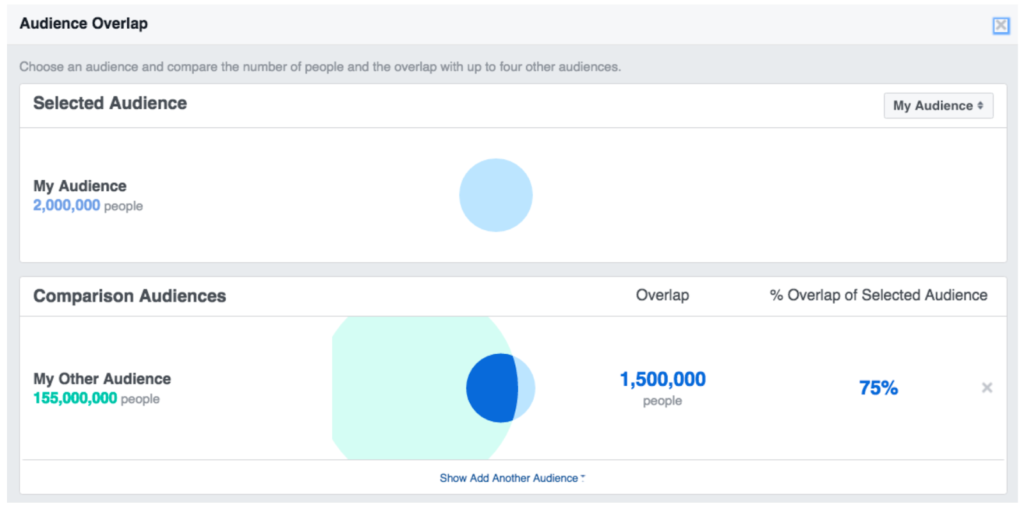
12. Use Dynamic Ads to combat ad fatigue
If you’re not in the know already, dynamic ads are ads that automatically adjust their content based on the user.
Let’s say you run an e-commerce website that sells clothing. One of the potential customers you’re targeting has recently searched for “swim shorts”. Rather than showing them an advertisement for a promo offer on t-shirts, it makes more sense to show them your offer for swim shorts.
Dynamic ads use consumer data like product affinities, geo-location, and browsing history to present your audience with the ads that are most relevant to them.
This helps reduce ad fatigue as it increases the likelihood that your audience will be genuinely interested in your ads in the first place.
13. Target existing Facebook followers separately
Fun fact: customer acquisition can be anywhere between 5 to 25 times more expensive than customer retention.
Now, obviously this doesn’t mean that you should stop trying to gain new customers. After all, if the lifetime value of a hypothetical new customer is 30 times higher than that of an existing customer, that wouldn’t make sense.
However, it does illustrate that you should be careful when advertising to people who already support your brand.
When running any campaign, it’s advisable to split your existing followers on Facebook into a new audience and target them separately. The last thing you want your advertising to do is irritate your biggest fans. Avoid ‘bombing’ your followers with repetitive marketing for products they may have already bought.
14. Change the format of your ad to avoid ad fatigue
As time progresses and people spend more and more time online, video advertising is becoming increasingly important.
There’s heaps of benefits to advertising with video on social media, from increased engagement to increased conversions.
The whole process can be a bit daunting if you’ve never done it before, but it’s not as complicated as it first appears.
Changing the format of your ad to video is one way to avoid ad fatigue.
Of course, if you’re changing a still image ad to a video ad, it’ll require a fair amount more work than just adjusting some images or text.
Refer back to your initial ideas for the ad and draw out a bit more content. Why is your sale great? What makes The Online Plant Shop we looked at above better than it’s rivals? More choice? Cheaper? Faster delivery?
Whatever you decide to put in your video ad, it doesn’t have to be very long, and you can even use something fairly straightforward like stills with a voice over.
At any rate, you’re fundamentally changing the nature of your advert so it will definitely stave off ad fatigue!
15. Reassess your original ideas for a campaign
If you’ve tried everything else and nothing has worked, it might be worth referring back to the original brainstorm session you had.
You may have had some ideas for copy or images that you dismissed at the time, but looking back weeks or even months later has improved your perception of them.
By reassessing your original brainstorm for a campaign, you’ll potentially generate ideas for entirely new ad sets, or provide yourself with the right spark to change your existing ad set up enough to stop ad fatigue.
If you’re not too sure about whether an old idea will actually work, just remember that it’s almost certainly not going to be as bad as some of these clangers!
There’s also the option of using user generated content to mix up your ads. This involves videos, social media posts, and reviews about your services or products that are complimentary.
By sharing these, or adding them to your existing ad sets, you create social proof for your audience. Let’s face it, few people trust brands who say they’re the best, but many people will trust a real person when they say a brand is the best!
How do you feel about ad fatigue?
Ultimately, coming up with ad ideas and campaigns is a constant process. You should always be keeping an eye on advertising trends and campaigns from small startups and industry leaders. They’re a great source of inspiration!
Ideally, you want to have your ad schedule planned at least 3 months in advance. Keep a note app on your phone, that way if you see an ad on your commute or you’re just suddenly struck with a great idea for an ad, you can jot it down for later.
The above fixes may work for a while, and it’s a good idea to start including some of them in your process if you aren’t doing them already.
At the end of the day though, nothing will beat ad fatigue better than a completely new set of ads. You can certainly extend the shelf life of some of your advertising using the above methods, but whatever fixes you use will only delay the inevitable.
If you’ve tried everything and you’re completely out of ideas for new ad content or really struggling with ad fatigue, drop Klint Marketing a message to get a fresh set of (experienced) eyes.
With these 15 ways to beat ad fatigue, and you’ll be extending your ad lifespan in no time!
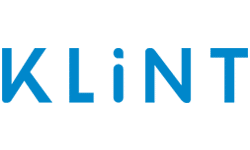
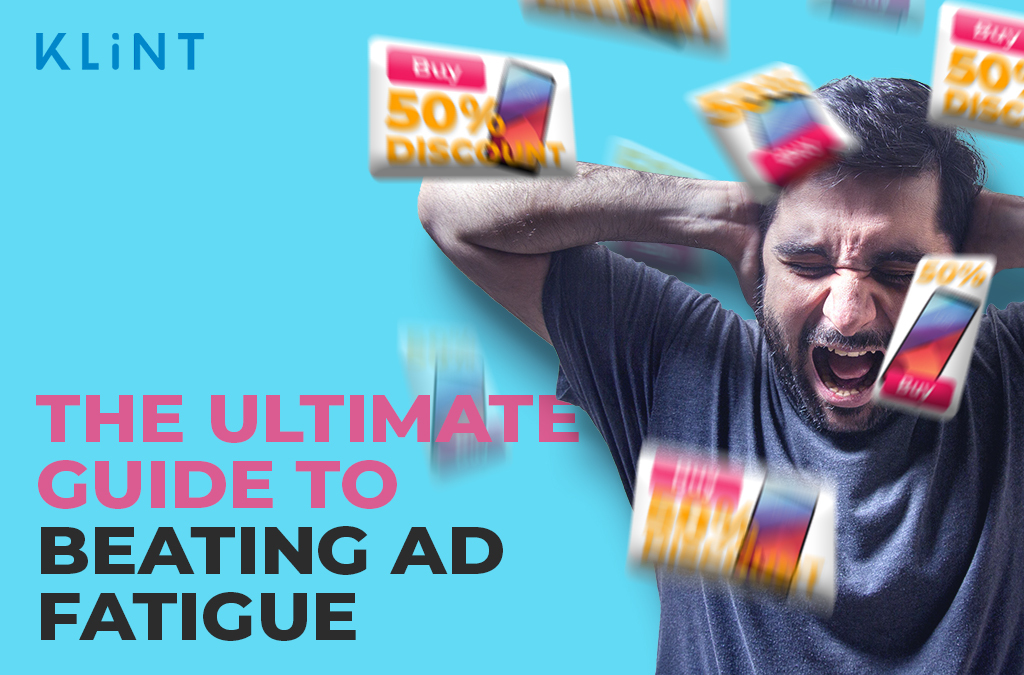

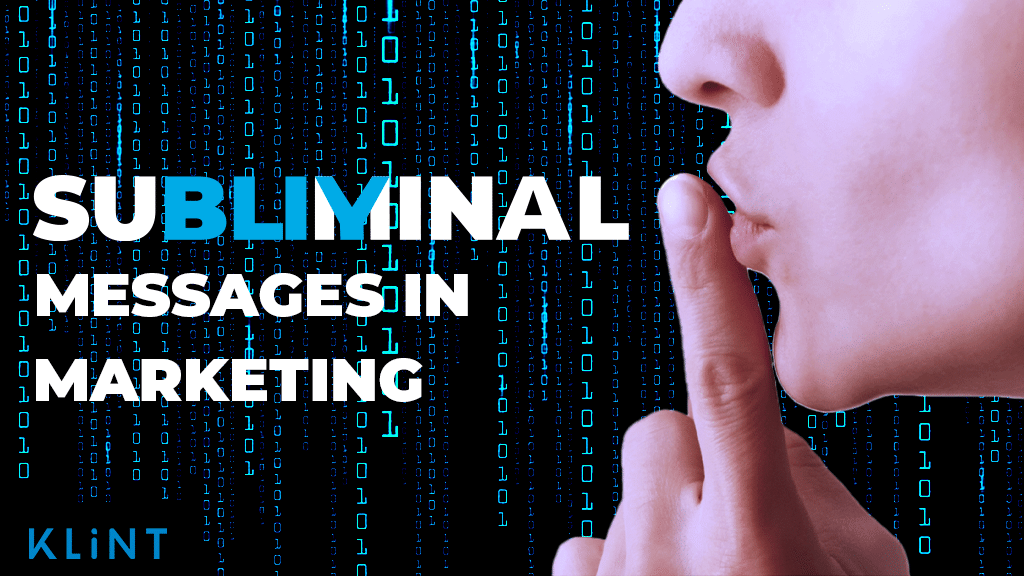
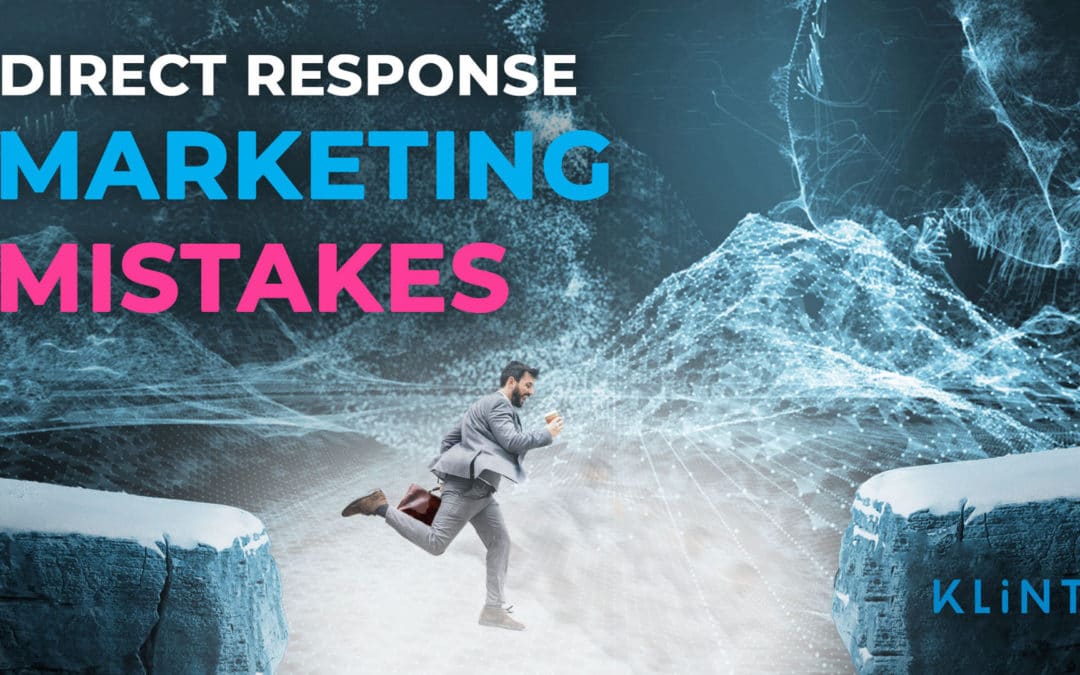
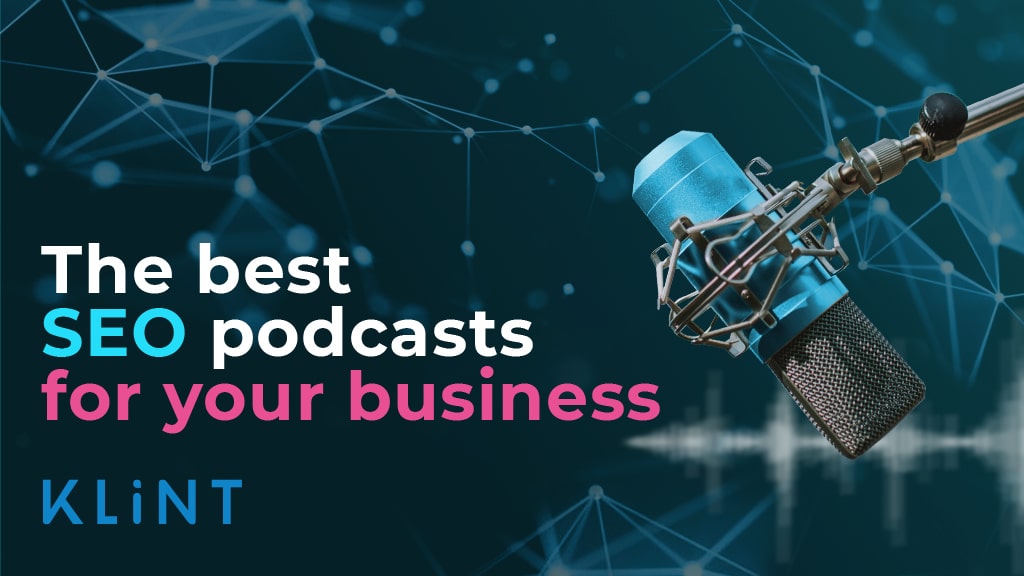
0 Comments